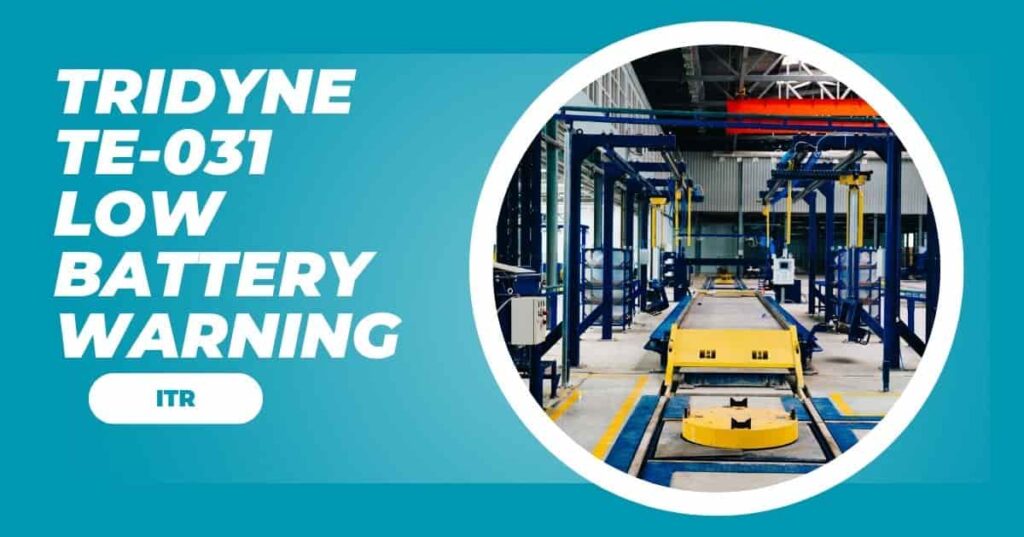What Causes Tridyne Low Battery Issues?
Tridyne low battery alerts can happen for several reasons, affecting how effectively the device can function. Many users rely on Tridyne devices for accurate readings, monitoring, or other critical functions, so understanding the root causes of low battery issues can save time, reduce stress, and keep the device running as expected.
One of the main reasons for low battery alerts is battery age. As batteries age, their capacity to hold a charge diminishes. When this happens, your Tridyne device might signal a low battery warning even if it recently fully charged. Another cause is power-intensive usage. Certain functions in a Tridyne device can drain the battery faster, such as extended monitoring sessions or continuous data transmission. Overuse of these features leads to a quicker battery drain than expected.
Environmental conditions also play a role. Extreme temperatures, particularly cold, can negatively affect battery performance. High temperatures might damage battery cells, while colder ones slow the internal chemistry, reducing overall battery capacity.
Lastly, incorrect charging practices contribute to low battery alerts. Charging the device too frequently, using an incompatible charger, or leaving it plugged in after it’s fully charged can all reduce battery life over time. Recognizing these causes can help prevent premature battery wear and prolong device usability.
Practical Solutions for Tridyne Low Battery Warnings
Once a low battery alert appears on a Tridyne device, prompt action can help restore function and prevent further issues. First, simply recharging the device with a compatible charger can often solve the problem. A dedicated Tridyne charger provides optimal voltage, preventing overcharge and ensuring a more reliable battery life. Always refer to the Tridyne manual for compatible chargers if a charger replacement is needed.
For cases where the battery drains unexpectedly quickly, recalibrating the device might help. Sometimes, the software misreads the battery percentage, showing an incorrect low battery warning. In such cases, fully charging the device and allowing it to drain completely a couple of times can “reset” the battery gauge.
If recalibration doesn’t solve the problem, consider replacing the battery. This solution is effective if the device is older or used intensively. Tridyne battery replacements can be purchased from authorized retailers, and changing the battery is usually straightforward if you follow the manual.
Lastly, software updates can occasionally fix battery issues. Some low battery alerts stem from software bugs rather than actual power issues. Checking for and installing any available updates from Tridyne might resolve the issue, especially if it’s a recurring problem after minimal usage.
Prevention Tips to Avoid Tridyne Low Battery Alerts
Preventing low battery issues with Tridyne devices can save users from unexpected interruptions and maximize device life. First and foremost, adopt proper charging habits. Always use the recommended charger, and avoid frequent or prolonged charging, which can degrade the battery. Charging the device only when the battery drops below 20% and unplugging it when it reaches 80-90% can help preserve battery life.
Regularly updating the Tridyne firmware is also a valuable preventive step. Many manufacturers release updates that address battery management issues, so keeping your device software up-to-date can enhance battery performance.
Environmental conditions should be carefully managed, too. Keeping the device at moderate temperatures, ideally between 20°C and 25°C (68°F and 77°F), can extend battery longevity. Avoid exposing the device to freezing temperatures or direct sunlight for extended periods, as these conditions can irreversibly damage battery cells.
Additionally, turning off non-essential features when not in use conserves battery power. For example, turn off continuous data transmission, location tracking, or other intensive functions if they aren’t required for your immediate tasks. Power-saving settings can help extend battery life by reducing the energy background applications use.
Regular device maintenance, such as cleaning and checking for software irregularities, can also help catch potential battery problems early. When followed consistently, these prevention tips can significantly reduce the chances of encountering low battery warnings on your Tridyne device.
Critical Takeaways for Managing Tridyne’s Low Battery Issues
Managing Tridyne’s low battery issues effectively involves understanding the root causes, acting quickly when alerts appear, and implementing preventive measures. Battery age, intensive usage, environmental factors, and improper charging practices are the primary reasons for low battery alerts in Tridyne devices.
Solutions like using compatible chargers, recalibrating the battery, replacing it if necessary, and updating the software can resolve most issues. Prevention is equally important, with careful charging practices, firmware updates, and environmental control all playing a role in prolonging battery life.
By taking these steps, you can keep your Tridyne device reliable and functioning at its best, avoiding the frustration and disruption of sudden low battery warnings.



